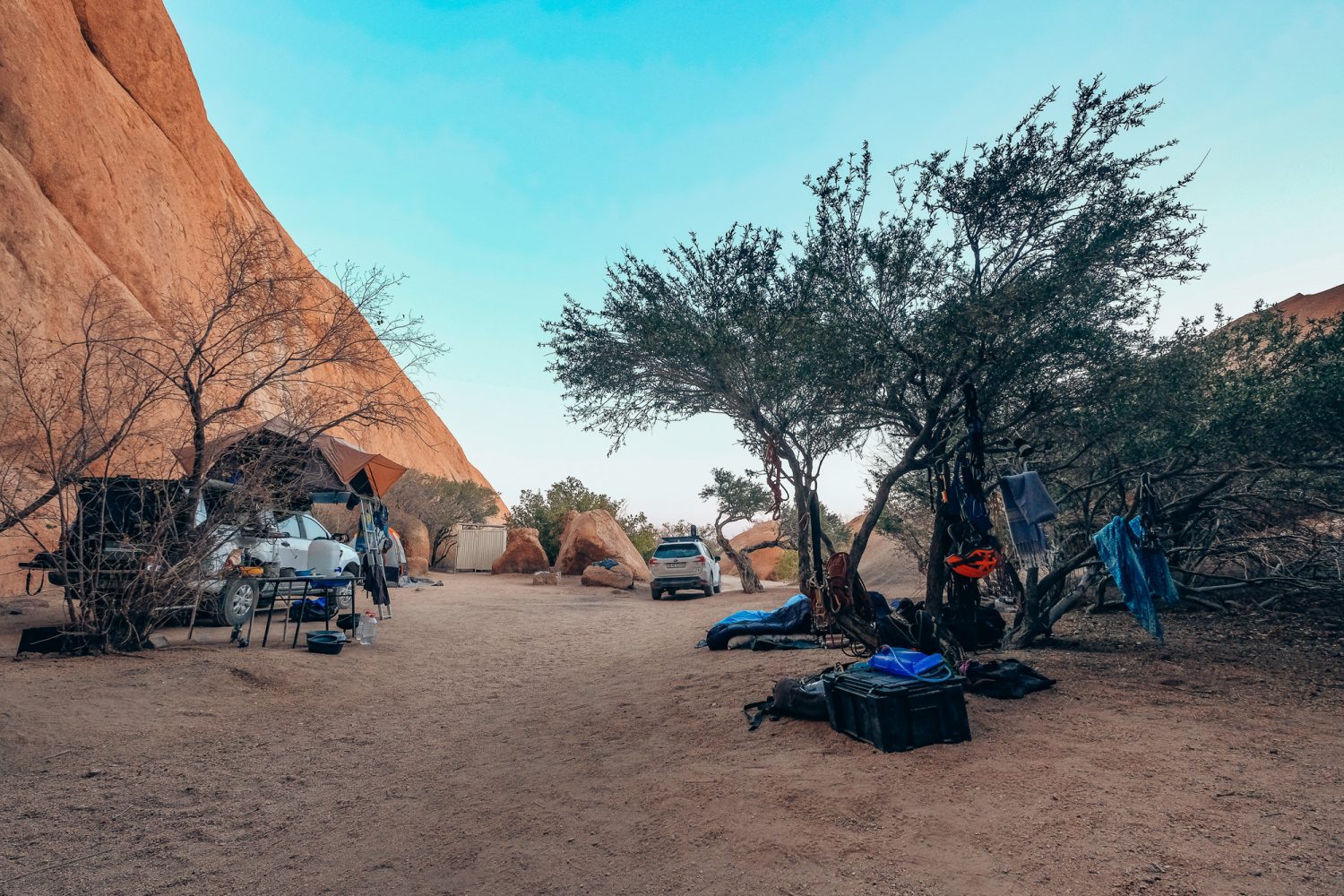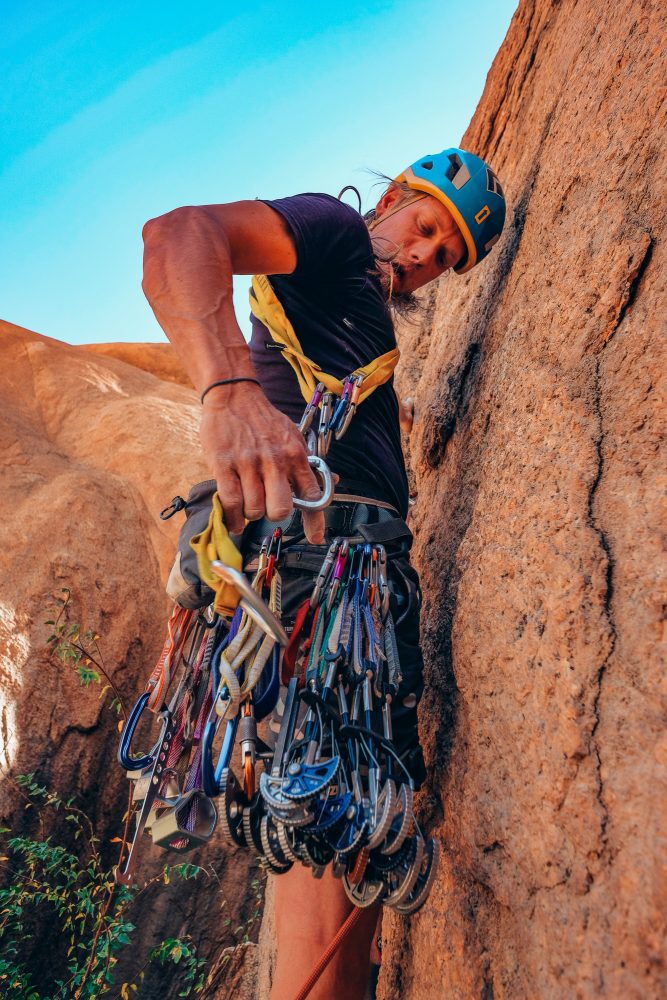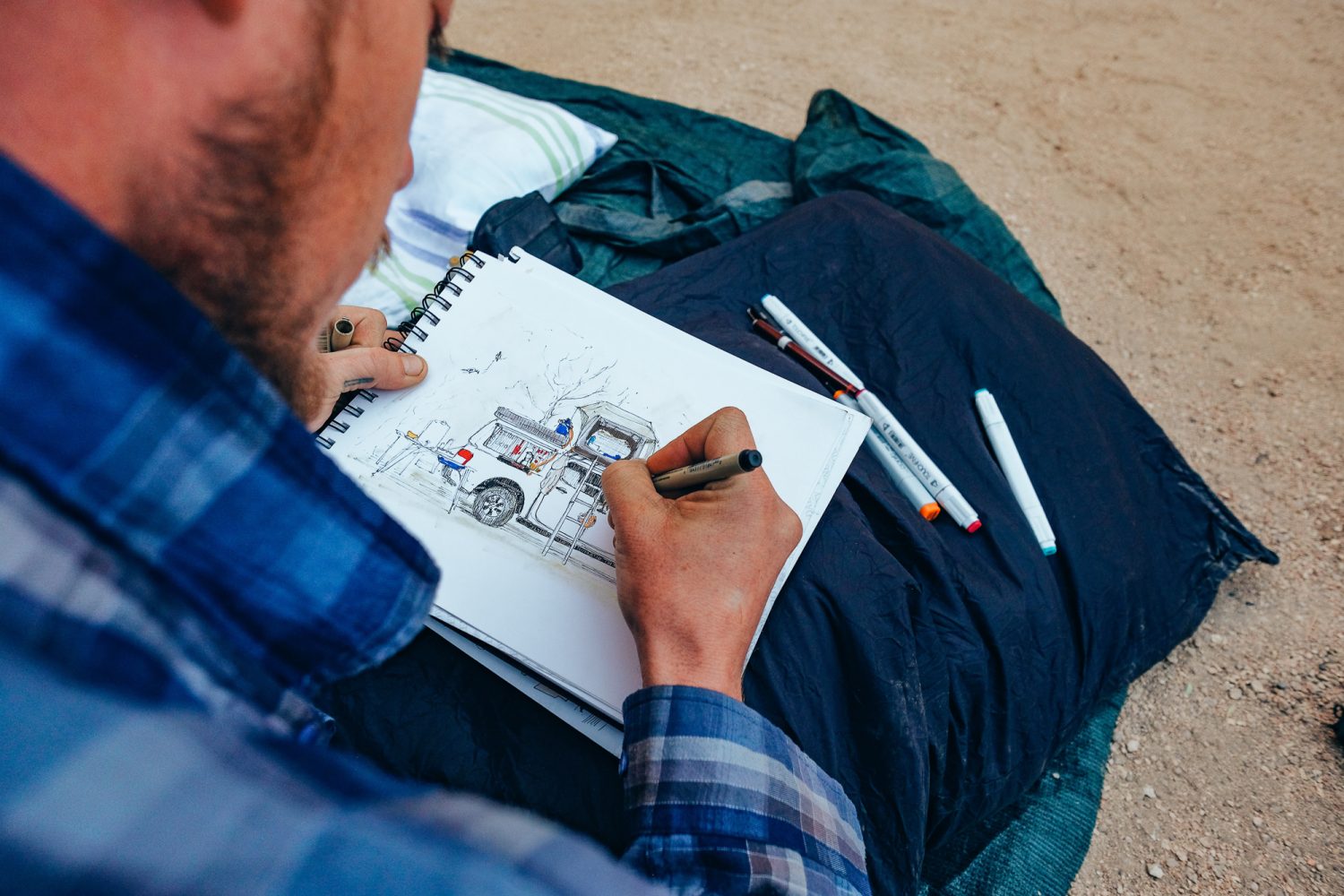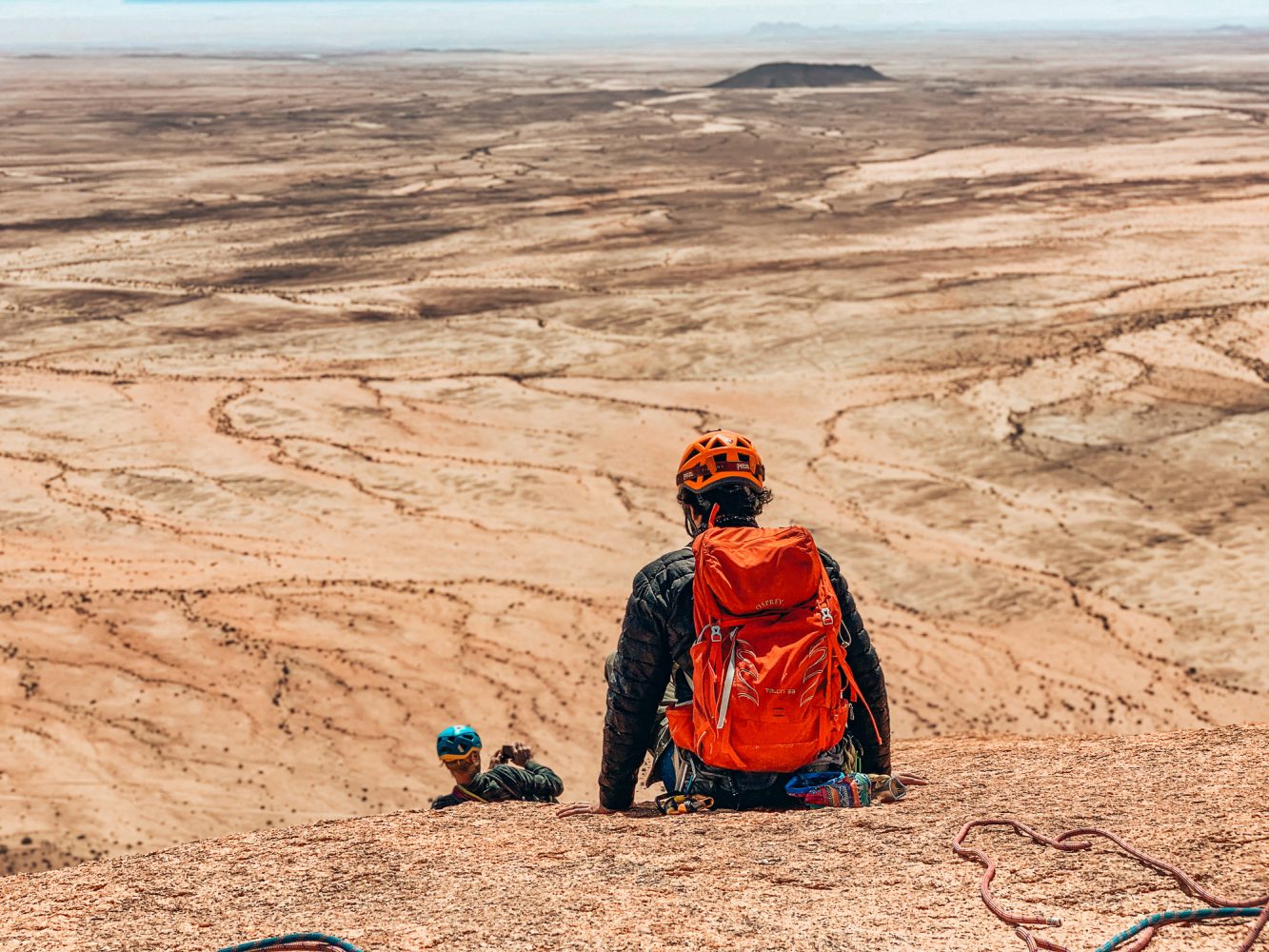When I reached the summit of Spitzkoppe mountain in Namibia, I had only been rock climbing for eight months. I couldn’t believe what it took to reach my goal, including the days leading up to it and the months of prep to make sure I was well-equipped.
Since my time in the infantry, I’ve been chasing the feeling I used to get during missions in Iraq, the feeling that sat comfortably somewhere between fear and a state of flow. The closest I’ve felt to those days is when I’m embarking on adventures or expeditions.
In late 2019, I found myself in Hogsback, where I met the climbing partners that would help get me to the summit of Spitzkoppe. They were climbing, I was there with my dog (with no climbing experience at the time), and we hit it off. After that trip, I became consumed with the sport of rock climbing. I felt it was something I was born to do and truly embodied my quest for adventure. Rock climbing combines many things I love: getting out there, being in nature for most of the day, and pushing myself to my limit. It also provides me with an immense amount of fear that I haven’t experienced anywhere else.
Not long after I started, my climbing partner, Steve, and I would speak about places around Southern Africa. We climbed many places within a few hours’ drive from home, but true to form, I had big dreams and goals to climb somewhere that would really push me. I saw climbing as a gateway to expeditions that could one day take me to some great spots around the world.

Steve mentioned a climbing trip into Namibia, to Spitzkoppe, a famous granite peak. The first time he mentioned it, I didn’t hesitate to say I was in. I had never been to Namibia, and I was extremely keen to get my first summit.
There would be others joining us, but Steve and I took care of the trip planning. Steve was extremely knowledgeable about climbing preparation, so he focused on that, and I had a lot of experience with planning the logistics of adventures, so that was my focus.
I reached out to some brands, organized an extra vehicle through Subaru, and picked up some additional gear for my Ford Ranger (a water tank, new RSI canopy with a kitchen, dual-battery system, and a rooftop tent) that would allow us to be self-sufficient during our time in Namibia.
Getting from Johannesburg to Namibia proved to be tougher than I thought. The roads were extremely long and boring. We didn’t reach the first dirt road until late on the first day, and it was a rough one due to it being poorly maintained. The following day proved to be long and hot. We underestimated the toll the drive would take on us and arrived at the Spitzkoppe campsite in the dark.

The camping area was massive and spread out over a few kilometers. We were given a paper map of the various campsites, but it was a crapshoot trying to figure out which one would be best. We drove around for at least an hour, but eventually, we picked a spot, set up the essentials, got some rest, and planned to reassess the next day.
The following day’s plan was to sort out our current camp spot or possibly find another one. The first thing we noticed was that we were extremely exposed to the elements (we were in the desert), and there was barely any shade. If we planned to stay here for a week, we would need some protection from the sun at the very least. After a few drives around the other campsites, we made a shortlist of potential locations. After a bit of deliberating, we decided on our new spot, the one that we would come to love and know as the “Cove.”
The Cove was hidden. In order to get to it, you had to drive along a path leading through another campsite, and then just around the corner was another path that took you through a few trees and rocks and opened up into the Cove. The site featured three massive walls, offering shade and protection that would become our saving grace in the heat.


Our plan for the week was simple. We’d spend the first few days climbing various routes throughout the park to familiarize ourselves with the feel of the granite, then take on Sugar Bowl (a three-pitch climb), which was a massive dome-like rock. Then we would go for the summit on day five or six.
The days prior to the summit were a lot of fun. We rarely saw anyone else around us, there was no cell signal, and we were free to do whatever we wanted. It was such a blast enjoying the freedom and taking on climbing routes that looked appealing.








While those days were great, Spitzkoppe was always the topic of conversation and our ultimate goal. We were unaware as to how exhausted we became in those early days, but on day five, Steve and I decided that we would attempt the summit on our own, familiarize ourselves with the route, and ascend as a group the following day.
The thing about climbing Spitzkoppe is that there are no signs or trails on the property to tell you where to go. If you’re there to climb, you need to have purchased a guidebook, which gives you all the information on the area and is sourced by previous climbers and the notes they’re willing to pass down. Steve had the guidebook, and from my awareness of his constant reading of it, he was well-informed about what was ahead.
We woke up around 3:30 a.m. that morning, got some food, packed up, and set off across the park in the dark. We spent two to three solid hours scrambling over massive rocks, navigating by following stacks of rocks (markers) and landmarks noted in the guidebook.

We got to an area that we thought was the start of the climb, but after an hour or so of searching, we realized we weren’t where we should be. We could take a sketchy option to head up, but it looked risky, which told us both we needed to turn around, go back to camp, and phone some climbers who knew the route. We were devastated and thought that was it for our summit attempt as we were completely wiped out and exhausted.
Later that day, we got a call from a friend who told us where we had gone wrong. There was some excitement in the air from the other climbers as they had rested up and were keen to try the summit. I felt like my tank was completely empty, but there was no way I would stay behind while everyone else went up. Eventually, I caved and told the group I was joining.
The following morning felt the same as our first attempt—up at 3:30 a.m., and off we all went. We navigated past the markers and eventually found where we made the wrong turn on the previous day. That path took us through caves, squeezes, and eventually up and out to the other side of the mountain, where we’d stash some of our gear to start the actual climb.




The first pitch took us to the other side of the mountain, where the wind was pumping cold air, and I realized I was not dressed appropriately. The temperature change left me shivering and shaking as I made my way up each pitch.
On the days leading up to the summit, I had so much confidence in myself and my climbing ability. The cold took all of that from me, and I was left in full-on survival mode, relying on those around me. I could not have made it without the compassion and support from my climbing partners. They were patient, never pushed me harder than I needed, and were always there to help when they could. I didn’t have anything to prove, and asking for help was almost a greater reward than doing it on my own.
Reaching the summit, I was gripped with so many emotions: pure joy, strength, and so much self-confidence as I had leaned into that fear of the mountain and was able to push past it. It had been a great adventure to get there and served as a valuable life lesson, showing what can happen when you let go of fear and see what’s on the other side.

Our No Compromise Clause: We carefully screen all contributors to ensure they are independent and impartial. We never have and never will accept advertorial, and we do not allow advertising to influence our product or destination.


